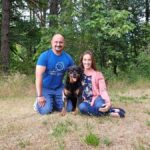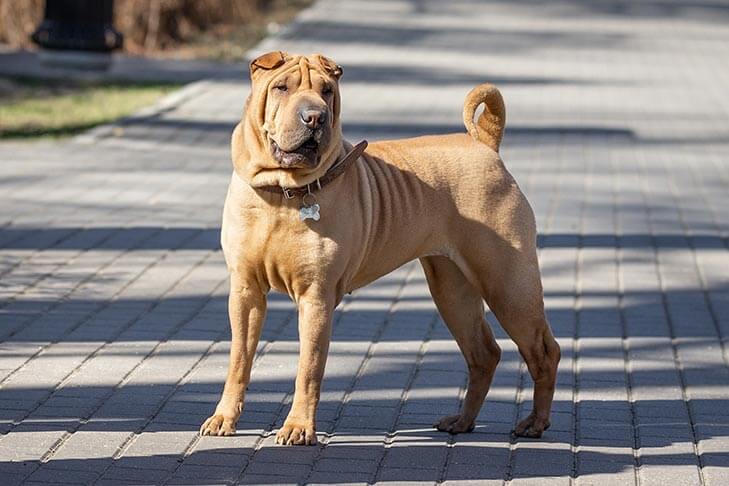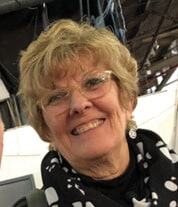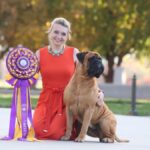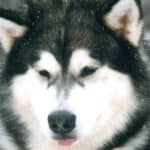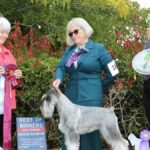Interview with a Non-Sporting Group Judge Marge Calltharp
Where do I live? How many years in dogs? How many years as a judge?
Marge Calltharp: I was born and raised in Connecticut. After graduating high school, I left for college, got married, and lived in the Panama Canal Zone and then for a number of years in Kansas City, Missouri. While growing up, I was always around dogs but never had a person as a breeder or training mentor. I never came to a place in my life where I could further my knowledge and interest in showing, training, and breeding dogs until 1978. I was licensed by AKC to judge my first breed, the Chinese Shar-Pei, in 2000, but had judged sweepstakes and at matches a number of years prior.
What is my original breed? What is/was my kennel name?
Marge Calltharp: My original breed is my “kid dog” given to me by my grandmother… a Miniature Poodle. I trained her and showed her at 4-H obedience. My grandmother had Miniature Pinschers and I also owned Dachshunds. However, my first breed that started me on this journey was the Shar-Pei. Our kennel name is registered and is a combination of my name and my husband’s—Marbo Kennel.
Can I list a few of the notable dogs I’ve bred? Any performance or parent club titles?
Marge Calltharp: CH Marbo’s Toby was a top-winning dog in the Chinese Shar-Pei Club of America prior to the breed being fully recognized by AKC. CH Mar-Bo’s Shu Fang Chang was also a top-winning dog and he produced many notable dogs in early pedigrees. CH Marbo’s Sailing Into the Blue, “Azul,” was Best of Breed at the 2016 Westminster Show. My first Shar-Pei, Shir-Du’s Mr. Maku, received a CD title, but again prior to the breed’s full recognition by AKC. Just as a side note, the SP was not admitted into the Miscellaneous Class until May 4, 1988 and was not fully recognized until August 1, 1992. The breed took years to receive full recognition, but all along the way our parent club and shows were conducted under AKC rules and required that AKC judges preside over our specialties. When the breed became part of the AKC family, members were fully aware of AKC rules and procedures. The CSPCA had a very sound foundation. I wish many of the newly recognized breeds had that foundation, but I digress.
What are some of the qualities I most admire in the Non-Sporting Breeds?
Marge Calltharp: I admire its diversity. Many look at this Group as a collection of “leftovers.” But if you start judging the dogs in the Non-Sporting Group, it is the precursor to all other breeds and Groups. In this Group you have the snub-nosed breeds that can relate to the Boxer and the Bullmastiff, etc. Dalmatians can relate to breeds in the Sporting Group, and so on. When judging the Group, one has to know and pay more attention to the essence of each breed. The Bulldog, for one, has many different pieces that are important, and I love judging them as well because of their enthusiasm and antics. Bulldoggers are all so very dedicated to the breed, no matter who you are.
Have I judged any Non-Sporting Breed/Group Specialties?
Marge Calltharp: Yes. I have judged a number of SP specialties, including our National Specialty. I have also judged SP specialties in Slovenia, Italy, and in Moscow, Russia. In addition to the Shar-Pei, I have judged French Bulldog, Dalmatian, Poodle, Boston Terrier, Finnish Spitz, Lhasa Apso, Bichon, Chow Chow, Tibetan Terrier, and Keeshond Specialties.
Can I speak to the overall quality of the more popular Non-Sporting Breeds/Varieties; Bulldog, French Bulldog, and Standard & Miniature Poodles?
Marge Calltharp: First, I have been interested in watching Mini Poodles since I had one as a kid. It is such a great breed and is overshadowed by the Standard. I understand what led to its downfall, but now they are gaining strength and popularity. I saw many, many good ones when I judged in Sweden. It is always a problem when a breed has a limited gene pool, but I think many breeders now are working through that. The Bulldog has improved and is much more consistent in quality. There are a number of very top-quality Bullies being campaigned today—and by their owner and/or breeder. Frenchies? WOW! I can’t say more about their overall quality. I love this breed and have owned one in the past when they would have been considered a low-entry breed! It was difficult to balance breeding, exhibiting, traveling with the SP to our specialties and attending AKC shows to put a championship title on my Frenchie. Like the Bulldog, there are many important pieces to consider when judging this breed. You again have to keep in mind the essence of the breed. The head has many important parts; the wide up-sweep of the jaw, nose placement, eyes, head shape, bat ears and their set. There is the square body, rise over the loin, low set tail, and the “cube” that you can place between the front legs, establishing the proper shoulder and placement of front legs. All of these parts are what you also look for in the Bulldog (with the exception of the bat ears!).
The Standard Poodles are consistent in quality. I have noticed that there are more exhibits lacking in depth of chest and the light, airy gait. Overall size, head, topline, feet, and coat type and texture are all consistently good.
What about the overall quality of the more “vulnerable” breeds; Coton de Tulear, Finnish Spitz, Löwchen?
Marge Calltharp: Unfortunately, there is never a substantial entry to judge the breeds’ overall quality. I would say that the Coton has a better overall quality. Their cottony white coat and unique topline are evident. Finnish Spitz shown in the Northwest are of outstanding quality, with proper height, and are square, with the desired length of leg. The ones I have examined in the East tend to be square, but need more leg under them.
However, I have not seen any that lack coat color and texture, head type, and their familiar bark! The Löwchen is another breed for which I do not understand why they aren’t more popular because they are a lovely breed that is an easy keeper. Perhaps people are frightened of the show clip? They make a lovely companion. The class animals I see exhibited are not consistent; however, the specials dogs are normally of good quality, sound, balanced, good coat, trim and texture. Gait is clean, with balanced reach and drive.
Would I have any advice to impart to newer judges of the Non-Sporting Breeds who come from other Groups?
Marge Calltharp: Do not overlook any breed in this Group. Read the standards and learn the essence of each breed. The Bulldog, Frenchie, and Boston are similar but have many very distinct features important to each breed. The Chow and Shar-Pei, the only recognized breeds that possess the solid blue-black tongues, come from China but are very different from each other. The Mini and Standard Poodles are similar, but temperament is different. You will like this Group for its diversity, though it requires some thought before you gets your hands on each exhibit.
In my opinion, how do today’s exhibits compare with the Non-Sporting Dogs of the past?
Marge Calltharp: The breeds that have a sizable gene pool are flourishing. Overall, I have to think they are stronger than before. The Bulldog, Frenchie, and Boston are very strong and I feel they have improved over the years. These breeds have a number of experienced, longtime breeders. I am happy to see that Poodle breeders have introduced the Mini Poodle to the line-up and, although still not many are being exhibited, I have been pleased with their quality. That excites me.
I wish there was an entry and interest in the Norwegian Lundehund. It is such a nice, interesting breed that I hope will not be lost. I had a wonderful mentor who always brought me an entry. She has passed away and I think the breed has really suffered. It reflects my earlier comment about a breed not having a sound foundation before they are recognized by AKC.
The Shar-Pei has its own problems and characteristics that are lacking. Shar-Pei means “sand skin” or “sand coat” in Chinese. This refers to the texture of the coat. Most all dogs coming into the US had a consistently needle-harsh coat. They were also “horse coats.” Many “brush coats” in the past had a bristly, off-standing coat. Both coats were produced from a horse coat to horse coat breeding. There are some brush coats that are not harsh, even in the beginning. Some horse coats, even though they are the correct length, are “bunny soft.” I believe the introduction of more colors has also brought real soft coats into the breed. Judges, this is not correct breed type. The topline is another issue. Historically, the horse coat variety possessed the correct topline, with the required slight dip behind the shoulders and with a slight rise over the loin (similar to a muscling over the loin), leading to a high tailset and an up-tilted anus with a “butt shelf.” The brush coat variety possessed the more level topline. However, because the brush coat had the better, more stable temperament, boning, and a larger head that breeders liked, we almost lost the required topline. Breeders are trying to recapture the correct topline in their breeding programs. Fronts of the breed are much better, but many rears still lack the proper bend of stifle and length of hock. Temperament, on the other hand, is 100% improved. It is much more stable and to the point of not being aloof with strangers. I think most breeders will agree that this is for the better. As a breeder, you are always looking to improve something with the next generation.
Why do I think Non-Sporting Dogs can become such outstanding Show Dogs?
Marge Calltharp: I think it has to do with attitude, attitude, attitude. The Group has the very showy Standard Poodle which also possesses that beautiful coat and trim. The Frenchie is always on top of its game and is excited to have the attention of people. Bulldogs, for all their uniqueness, just make you grin and are very clever.
If I could share my life with only one Non-Sporting Breed, which would it be and why?
Marge Calltharp: Besides the Shar-Pei, to select only one other breed would be difficult—but it would be the Tibetan Spaniel. This breed is fabulous and one of the best-kept secrets. The breed is a good size to travel with because it will fit in a Sherpa bag under the seat on an airplane. It is easy to maintain and has longevity; plus they are cute. They have a great temperament, get along with other Tibbies, and are fairly easy to train.
Just for laughs, do I have a funny story that I can share about my experiences judging the Non-Sporting Group?
Marge Calltharp: There was this one time while judging Shar-Pei, the handler’s lead of a Specials dog broke while going around the ring. The dog kept the exact gait, never missing a step, followed the ring pattern, and stepped up onto the ramp, setting himself up perfectly. The dog looked over his shoulder toward his owner as if to say, “What’s taking you so long to catch up?” We all had a good chuckle!
